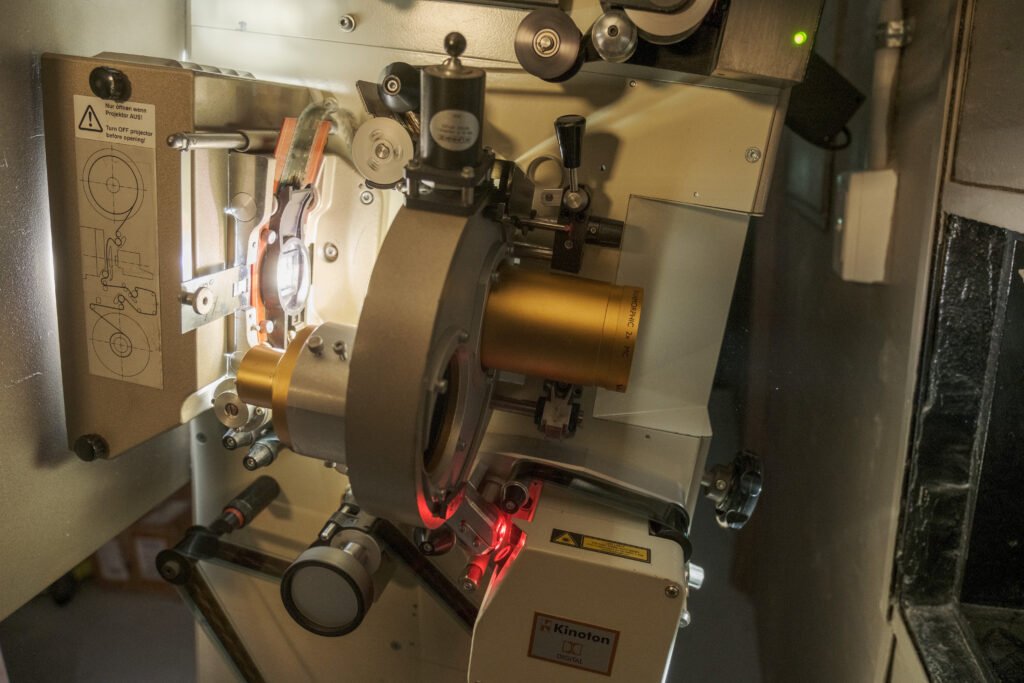About Us
Welcome to The Revival House, the home of REEL movies in Perth


The Revival House
Our passion for preserving and celebrating the history of the heritage listed Como Theatre (formerly known as the Cygnet Cinema) runs deep. Built in 1938 by local identity and film entrepreneur James Stiles, the Como Theatre was the first purpose-built sound cinema in the suburbs, setting the stage for a rich cinematic legacy in the heart of Perth.At The Revival House,
Our mission is to reconnect audiences with the magic and nostalgia of classic cinema by screening movies in their original film formats. By showcasing works from 16mm and 35mm film prints, we ensure an authentic experience that transcends the limitations of modern digital projections. Each flicker of the film, the subtle grain of the image, and even the slight imperfections that come with age evoke a sense of history and artistry that digital formats simply cannot replicate. Our commitment to preserving these cinematic gems not only honors the beloved traditions of the past but also invites a new generation to appreciate the craftsmanship and soul of film.
As you settle into your seat at The Como Theatre, you immerse yourself in a world where storytelling and visual artistry converge on the grand screen. Our carefully curated selections pay tribute to the golden age of cinema, allowing audiences to relish the timeless performances, stunning cinematography, and evocative soundtracks that have shaped the film industry. Here, the film reel spins, bringing to life tales that have enchanted viewers around the world. We invite you to join us in celebrating the legacy of film, where every screening is a communal experience that rekindles the spirit of classic storytelling.
The Revival House
What do we do?
At The Revival House, we are dedicated to bringing the Como Theatre back to its roots by screening all our movies from 16mm and 35mm film prints. Screening from film prints offers audiences a truly authentic and immersive movie-watching experience. Join us as we pay tribute to the golden age of cinema and keep the magic of film alive.
Difference of Film vs Digital
The magic of watching movies on film compared to digital lies in the rich, cinematic experience that film offers. The warmth and depth of colours, the texture and graininess of the film stock, and the immersive, nostalgic quality of the medium all contribute to a unique viewing experience. Film provides a sense of authenticity and craftsmanship that is irreplaceable by digital technology. The process of shooting on film requires a meticulous attention to detail and a dedication to the art form that is palpable on screen. Watching a movie on film is like stepping back in time and experiencing cinema in its purest form, where every frame is a work of art carefully crafted by the hands of talented filmmakers. It is a truly magical experience that captures the essence of the golden age of filmmaking.
At The Revival House Perth, we’re dedicated to providing an unparalleled cinematic experience and our technical capabilities reflect that commitment.
We’re proud to offer full screening capabilities for a wide range of film formats including 16mm, 35mm and the immersive 70mm.
Complementing our visual prowess is a comprehensive suite of audio formats ensuring the sound matches the visual grandeur.
From the classic clarity of Mono to the advanced surround sound of Dolby A, Dolby SR, Dolby Digital, DTS and Sony SDDS 8 and even legacy 4 and 6-track magnetic sound, we’re equipped to faithfully reproduce the original audio experience of any film.
So, sit back, relax, and enjoy the show at The Revival House – where the past meets the present on the big screen.
Glossary of Terms
A Handy Guide to Key Cinema Terms.
The most common sizes of film stock used to shoot, print, and present movies. 35mm is preferred for commercial film and TV shoots, with multiple stocks for select shooting conditions. 16mm is more often used for lower-budget projects, commercial and industrial shoots, and previously as a “home movie” format.
This indicates the dimension of the projected image, usually measured by comparing the width to the height. For example, 1.85:1, commonly called “Widescreen”, means the picture is 1.85 times as wide to every increment of 1 it is high, and 2.35:1, or “Cinemascope”, means the picture will be even wider.
A now-dormant process which allowed for multi-channel sound reproduction in theatres using magnetic striping attached to the film print. Often vulnerable to erasure and damage due to demagnetizing and detachment through aging, requiring strict storage and handling conditions. Supplanted by Dolby Stereo, an optical process requiring less delicacy and upkeep.
A single audio channel of sound. The manner in which almost all films and recorded music were presented until the late ‘50’s, when technology allowed for discrete divided channels of sound. When viewing a movie with such a soundtrack, the audio generally comes from the center speaker behind the screen.
A modern cinema sound process where coded information directly etched onto a film print is read by a light beam connected to a computer and decoded into multiple discrete channels. Unlike regular Dolby Stereo, the reader is not affected by film splices or changeovers, resulting in clean, uninterrupted sound.



A form of image deterioration associated with films printed on stock manufactured by Eastman Kodak (though other manufacturers and labs often come into play) in the ‘60’s through the ‘80’s, characterized by color shifts to one dominant tone – usually red, pink, or brown.
A form of image deterioration associated with films printed on early stock manufactured by the Fuji company in the ‘60’s through the ‘80’s, characterized by large clusters of red, dot-like discolorations on the image.
Originally a nickname given to a theatre known for being in somewhat run-down or unkempt condition, and running older and/or non-prestigious films, usually in double- or triple-features (hence, “grinding” through the movies). Now better known to describe the kinds of genre and exploitation films that would play such a venue.
A showprint is a very high quality projection print made for screening at special events such as gala premieres. A showprint is usually printed directly from the composited camera negative, with each shot individually timed as a duplicate intermediate element would normally be, onto a higher quality of print stock than is usual for mass-production release prints
A release print is a copy of a film that is provided to a movie theatre for exhibition.
A now-extinct dye-transfer printing process which used three color-tinted negative sources (yellow, cyan, magenta) blended through imbibition (which I.B. represents) to create theatrical prints with extremely saturated colors that kept consistency for decades. In use until 1974, briefly revived in the late ‘90’s, then discontinued for good in 2002.
Cell phones and all other electronic devices are to be silenced or shut off, and not in use anytime lights are down and film is running on screen, including ads, shorts, and trailers. Violators of this policy will be given one warning, followed by ejection from the theatre without refund.
When a feature film is projected by running its individual reels on two or more projectors, changing from one reel to another in sequence. This is in contrast to “platter” projection, when a feature film is spliced together in its entirety and run through one projector as a continuous loop.
Trade name for the film loop used by projectionists to make sure the projected image is in focus, the masking is set for the correct ratio, and in some instances, that the two projectors are aimed precisely so that there is no picture shift when switching between them.
A method of joining two pieces of film so they can be projected as one continuous piece. There are three methods: the Tape Splice (usually used for editing), the Cement Splice (used for original material), and the far less common Ultra-Sonic Splice (used for Polyester Base film).
A gear inside a film camera or projector featuring pointed teeth, which latches onto similarly shaped holes in film stock, to feed it through the machine, without touching the image area on the film itself. Also can refer to the area on the film print where these holes are found.
Term for when a print begins to deteriorate in a manner that will ultimately render it unprojectable or worse, inspired by the smell that is often detected during this state. Symptoms involve warping and shrinking of the film stock and increasing inability to keep consistent image focus.

Don't Miss Out! Subscribe to our Newsletter Here!
The Como Theatre
16 Preston Street, Como, WA, 6152
Contact Info
- Phone : 0447 305 933
- Email : info@therevivalhouseperth.com.au
Our Social Media





